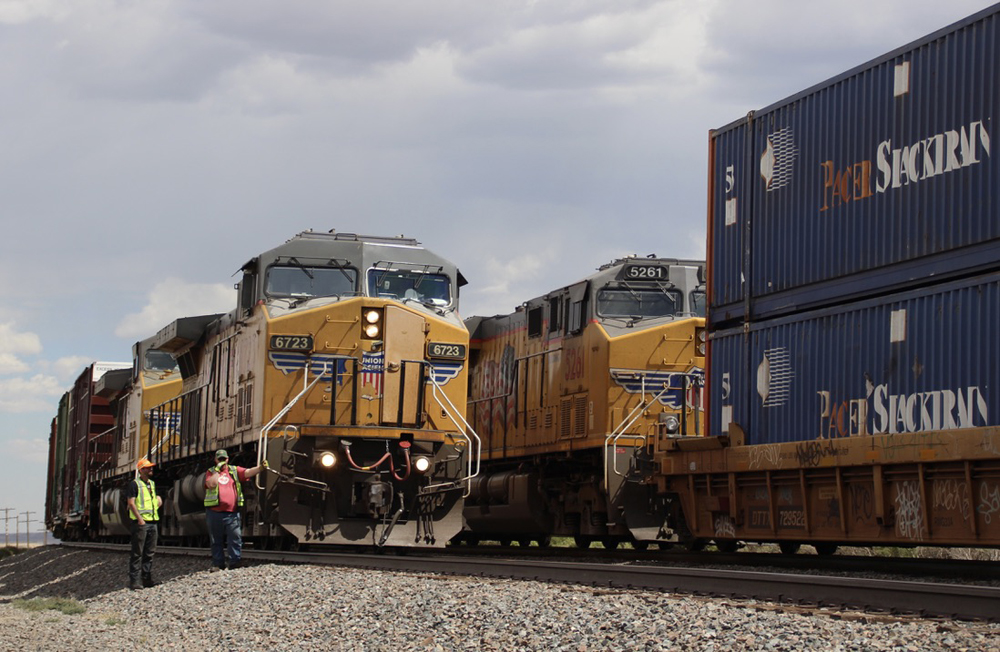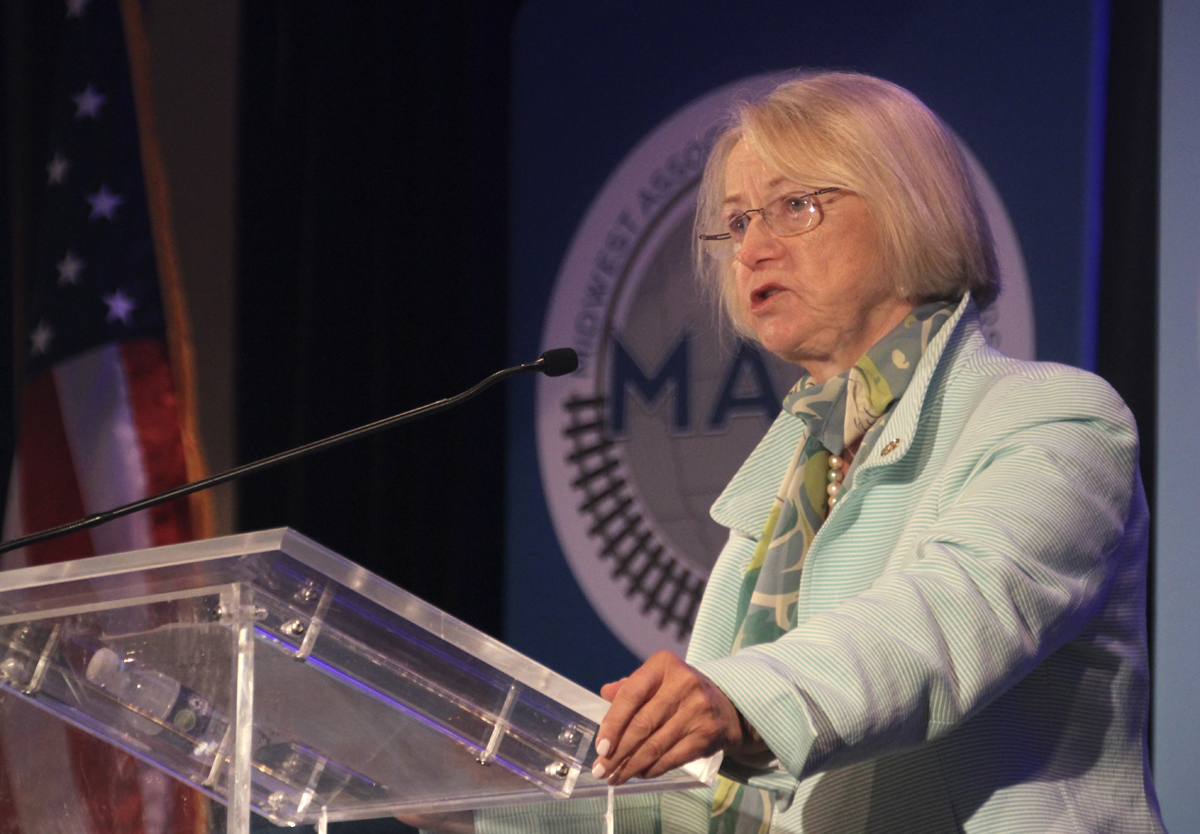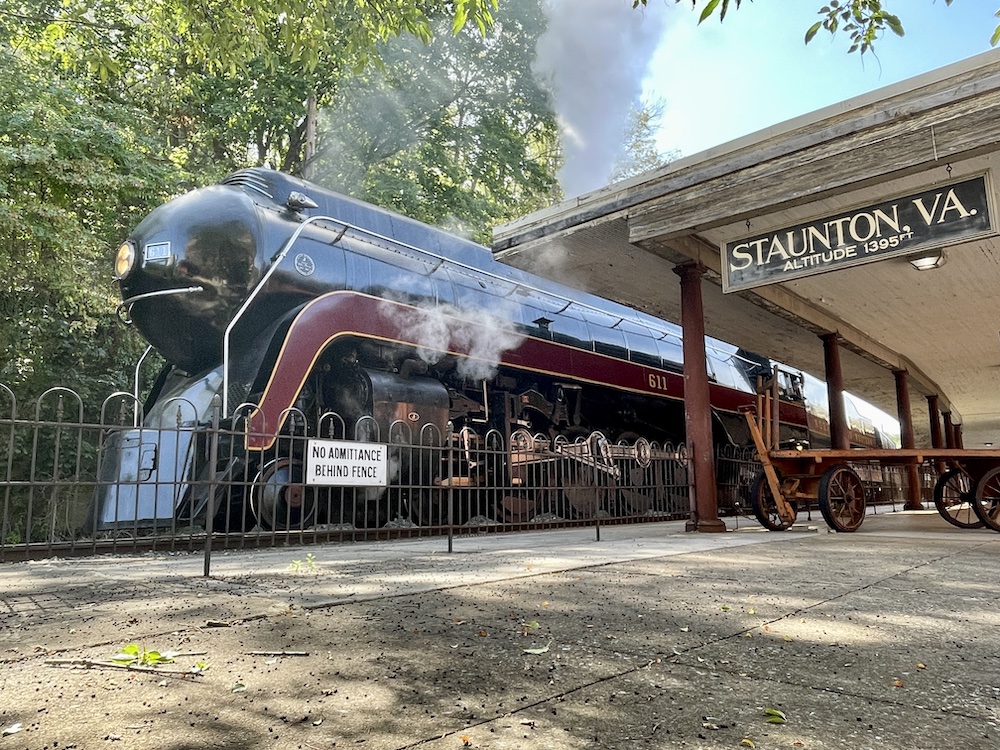
OMAHA, Neb. — Union Pacific has reached an agreement with General Committee 953 of the SMART-TD union to maintain two-person crews, the railroad announced, confirming an earlier report by the North Platte Telegraph.
General Committee 953 covers workers in a 13-state area on the Union Pacific and four short lines, and in its current form includes UP’s Eastern Division and Pacific Northwest territories, plus former Chicago & North Western lines.
In a March 25 press release, the railroad writes that the agreement “makes no changes to the current conductor position staffing each train as part of a two-person crew, provides long-term job protection to current employees, and gives the railroad greater flexibility to deploy brake or switch persons to work either in or outside the yard.” If ratified, the agreement ends UP’s intent to redeploy conductors to ground-based positions in the region.
Luke Edington, national general chairman of SMART-TD (the International Association of Sheet Metal, Air, Rail, and Transportation Workers-Transportation Division) informed members of the agreement on Friday in a letter shared with the North Platte Telegraph by a local union official. He said in the letter that the deal “preserves the conductor craft.”
Union Pacific had sought to test the use of ground-based conductors, which it called “expediters,” in a four-phase testing program in the region. It would have begun in Nebraska, with subsequent phases in Colorado, the Pacific Northwest, and Kansas [see “Union Pacific details plans to test feasibility …,” Trains News Wire, Dec. 14, 2022]. The program had been on hold while the railroad and SMART-TD continued negotiations and mediation [see “Union Pacific, rail labor remain in mediation …,” News Wire, Jan. 20, 2023].
Other aspects of the agreement include elimination of a requirement for brakemen or switchmen aboard local “through freight” trains if more than three switching events are needed on a run, and a signing bonus Edington called “greater than any received in past crew consist agreements.”
The railroad and union both said the new crew consist agreement would address “quality of life” issues for conductors through more predictable work schedules.
Beth Whited, UP executive vice president-sustainabililty and strategy, and chief human resources officer, said the agreement would allow for “predictable, scheduled shift work while giving us greater scheduling flexibility that will also improve customer service. We are working to finalize the contract details as quickly as possible.”
SMART-TD President Jeremy Ferguson said in the UP release, “Along with the scheduling enhancements, which were part of last year’s national agreements, we have an opportunity to positively impact our conductors by giving them fixed days off and greater certainty about their weekly assignments.”
The deal came just a day after Norfolk Southern and SMART-TD announced they had halted negotiations over a similar proposal for ground-based conductors [see “Norfolk Southern and union end talks …,” News Wire, March 23, 2023] and also intended to focus on quality-of-life improvements such as more predictable scheduling.
— Revised March 25 at 6:40 p.m. with information from Union Pacific press release.














The hated, late E. Hunter Harrison (who started all the PSR related gutting of the railroads) did not believe in one person, engineer only crews. Maybe because he had actual railroad field experience, something lacking in management now. I think he realized that time is money, and waiting hours for an “expediter” to fix something an onboard conductor could do is not cost effective.
Anything beyond the capability of the onboard conductor to fix, an “expediter” also won’t be able to fix. In those cases, they’ll have to wait for the mechanical department equivalent, the MIC (Mechanic In Charge) or Foreman General – titles dependent on location on the UP. Of course some places you’ll have to wait a lot longer for that mechanical help. They abolished or cut back the hours for a lot of those “rapid responders.”
You can bet the first slow day for the “expediters” and they’ll want to start cutting off those jobs, too. Not that they’ll be that many to begin with.
So, what happens when the ground based conductor gets caught in heavy traffic or is involved in an accident trying to find where exactly they are supposed to go?
This is one more reason for a vote of no confidence in the Smart leadership. This company has always been able to make our quality of life better they just choose not to do so. We have complained about bad train line-ups for along time. It’s the one thing they have complete control over and they do nothing to fix it… We were told at one point we won’t call a DH between 2300 and 0500 yet they do it all the time. We are patronized with the you said it we did it. They sit on high and look down on us the workers plain and simple. I am starting to ramble but it’s easy to do on this topic….
When a railroad like UP is making money hand over fist, record profits as this magazine has reported recently, there is no need to lessen use of two person crews whether they are close to an improved road (freeways included) or not. There could still be on call maintenance teams at close intervals (say every 100 miles) than the terminals. Most things the conductors now handle are replacing coupler knuckles and the occasional busted air hose. Anything bigger than that is going to require somebody from the car maintenance groups to respond anyway.
So what if the Operating Ratio never gets below 55. I am of the opinion that Congress in cooperation with the STB is going to require performance metrics that may make OR’s irrelevant as a key index for investors. And their big club is always going to be the implementation of reciprocal switching rules if the railroads don’t wake up and play ball for their shippers and customers, the whole reason they are in business in the first place. Or is that concept too foreign?
I’m all for QoL improvements, but I still say that there are places where ground based conductors might make sense, especially areas where the railroad is within spitting distance of major freeways. That’s still a limited area and union members shouldn’t dismiss it entirely without giving it a try in at least one location.